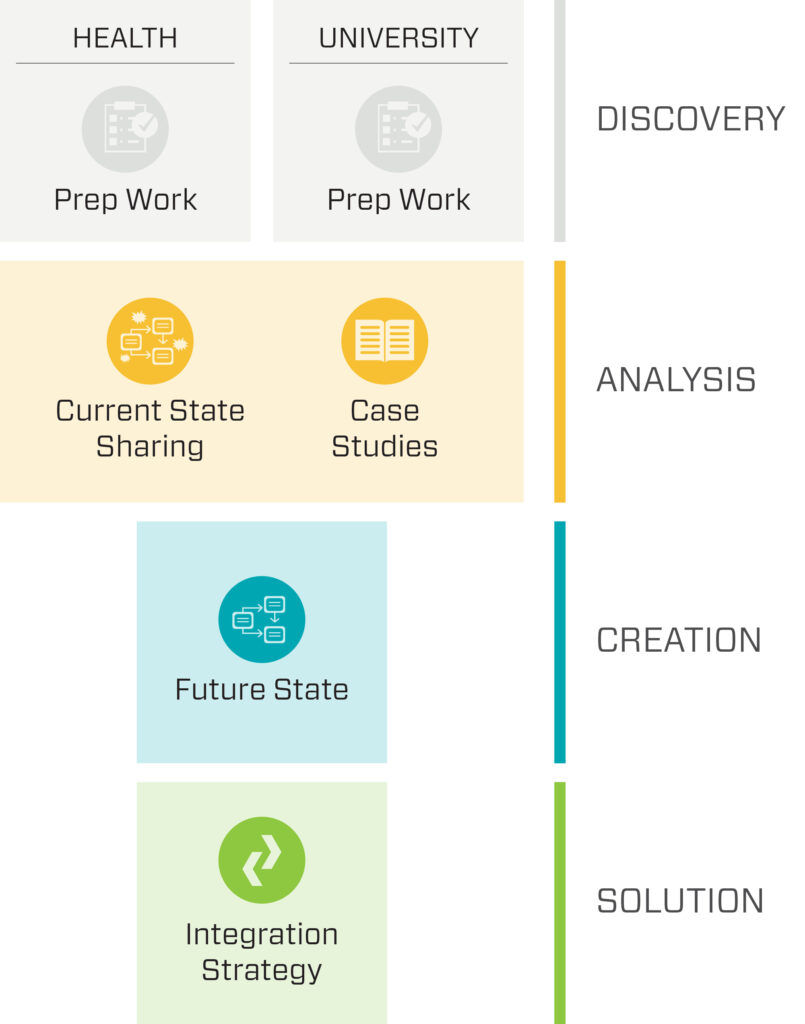University-based real estate strategy and healthcare real estate strategy have long had very different drivers and value expectations within their respective organizations. With the recent consumerization of healthcare, there is evidence that a convergence of perspectives and approaches can create true competitive advantage for organizations which operate in both markets.

As healthcare institutions grapple with the changes within the market, they must re-evaluate how they approach real estate investment decisions. With the shift to value-based care, and the advent of the health consumer, real estate has become one of the most important assets to the long-term success of healthcare organizations. In the past, the decision to utilize healthcare resources was primarily need-based. Today the decision is driven by desire and perceived value, forcing health systems to compete. Values such as access, convenience and quality form the basis for competitiveness and differentiation. As healthcare institutions adjust to this new reality, they are developing innovative assessment and valuation strategies, particularly in relation to the development of ambulatory service plans, and exploring best practices (in terms of valuing and optimization of real estate) from other industries.
 Within a market that has always been defined by choice and competition – such as colleges and universities – real estate has long enjoyed significant organizational focus since these assets are a recognized source of differentiation and competitive advantage. Whether facilities are purchased or developed to attract highly-recognized faculty, to house new academic programs or provide a sense of place for the programs and lifestyles of education consumers, they are usually investments that are aligned with, and supportive of, the overall organizational strategy. Because of this alignment, colleges and universities are often able to realize many layers of value in addition to fiscal value, such as operational and strategic value.
Within a market that has always been defined by choice and competition – such as colleges and universities – real estate has long enjoyed significant organizational focus since these assets are a recognized source of differentiation and competitive advantage. Whether facilities are purchased or developed to attract highly-recognized faculty, to house new academic programs or provide a sense of place for the programs and lifestyles of education consumers, they are usually investments that are aligned with, and supportive of, the overall organizational strategy. Because of this alignment, colleges and universities are often able to realize many layers of value in addition to fiscal value, such as operational and strategic value.
One way of aligning the two perspectives (strategic planning and real estate strategy) is to highlight the systems and perspectives both teams currently use to evaluate real estate-based decisions, and to collectively define a unified methodology that could produce efficiencies as well as enhance the organizational value of their portfolio of physical assets.
In a forum such as this, the process begins with a Current State mapping initiative, where our analytics team works with both the university and health system teams independently to codify existing protocols and drivers. This effort encompasses two (2), two-hour sessions, one with each team. Collectively, we produce diagrams summarizing the current state. Some of the questions we explore include;
- what are the strategic drivers for the acquisition / development of new assets?
- How do you value existing assets?
- what are the organizational processes driving new acquisition / development?
Armed with the current state maps from each team, we convene a cross-functional team and lead a stakeholder
session for team leaders to present their current state maps to the broader group for discussion. The intent of this effort is to highlight differences and to inform across organizational divides. We then share case studies from other organizations to highlight alternate methodologies and models which may pertain to the discussions.

In the final session, the unified team leverages the information and diagrams produced in the previous sessions to engage in a meaningful discussion to define a unified organizational perspective, derived from the best practices and expertise of both teams – the Future State map. This cooperative diagram defines a new real estate paradigm, one that forms the bridge for continued collaboration and alignment between organizational teams, and through that collaboration, accelerate the realization of broader organizational strategic goals.


